Best Swift Sorting Algorithms to Buy in December 2025
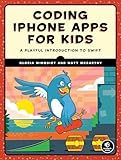
Coding iPhone Apps for Kids: A Playful Introduction to Swift


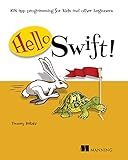
Hello Swift!: iOS app programming for kids and other beginners


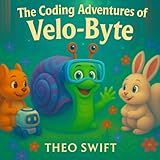
The coding Adventures of Velo-Byte (Velo-Byte Discovery Series)


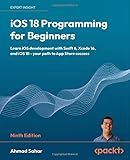
iOS 18 Programming for Beginners: Learn iOS development with Swift 6, Xcode 16, and iOS 18 - your path to App Store success


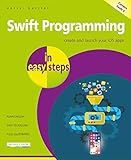
Swift Programming in easy steps: Develop iOS apps - covers iOS 12 and Swift 5


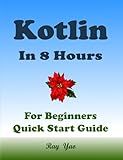
KOTLIN in 8 Hours, For Beginners, Learn Coding Fast!


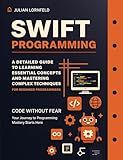
Swift Programming: A Detailed Guide to Learning Essential Concepts and Mastering Advanced Techniques


To sort an array in Swift, you can use the built-in method sorted() or sort() on the array. The sorted() method returns a new sorted array without modifying the original array, while the sort() method sorts the array in place.
You can use the sorted() method like this:
let unsortedArray = [3, 1, 4, 1, 5, 9, 2, 6, 5, 3, 5] let sortedArray = unsortedArray.sorted()
Or you can use the sort() method like this:
var unsortedArray = [3, 1, 4, 1, 5, 9, 2, 6, 5, 3, 5] unsortedArray.sort()
You can also provide a closure to the sorted() or sort() methods to define a custom sorting order. For example, to sort an array of strings by their length, you can do this:
let unsortedArray = ["apple", "banana", "orange", "kiwi"] let sortedArray = unsortedArray.sorted { $0.count < $1.count }
How to sort an array in Swift using the sorted(by:) method?
To sort an array in Swift using the sorted(by:) method, you can follow these steps:
- Define a closure that takes two elements of the array as input parameters and returns a Bool value indicating whether the first element should come before the second element in the sorted array. For example, if you have an array of integers and you want to sort them in ascending order, you can define a closure like this:
let sortedArray = array.sorted(by: { $0 < $1 })
- Call the sorted(by:) method on the array you want to sort, passing in the closure you defined in step 1 as the argument. This will return a new array with the elements sorted according to the specified criteria.
Here is a complete example showing how to sort an array of integers in ascending order:
let array = [5, 2, 8, 1, 3] let sortedArray = array.sorted(by: { $0 < $1 })
print(sortedArray) // Output: [1, 2, 3, 5, 8]
In this example, the closure { $0 < $1 } specifies that the array should be sorted in ascending order. The sorted() method then sorts the array according to this closure and returns a new array with the elements in the sorted order.
What is the difference between sorting an array in Swift and Objective-C?
There are a few key differences between sorting an array in Swift and Objective-C:
- Syntax: In Swift, you can use the sorted() method on an array to sort its elements, like this: let sortedArray = array.sorted(). In Objective-C, you typically use the sortedArrayUsingSelector: method on an NSArray, like this: [array sortedArrayUsingSelector:@selector(compare:)].
- Type inference: Swift is a strongly typed language, meaning that the type of elements in an array must be known at compile time. This allows for type inference when sorting arrays in Swift. In Objective-C, arrays are of type id, so the compiler does not have type information and you may need to explicitly cast elements when sorting.
- Nil handling: In Swift, arrays with optional elements can be sorted naturally, with nil values coming before non-nil values. In Objective-C, arrays with nil values may cause errors or unexpected behavior when sorted using certain methods.
- Performance: The underlying sorting algorithms used in Swift and Objective-C may differ, leading to potential differences in performance when sorting large arrays. Swift's sorted() method uses a stable sorting algorithm, while Objective-C's sortedArrayUsingSelector: method uses the 'quick sort' algorithm.
Overall, while both languages offer ways to sort arrays, the syntax and behavior may differ due to the inherent differences between Swift and Objective-C.
How to sort an array in Swift using the sort(by:) method?
To sort an array in Swift using the sort(by:) method, you need to provide a closure that defines the criteria for sorting elements in the array.
Here's an example of how you can sort an array of integers in ascending order:
var numbers = [5, 2, 8, 1, 7]
numbers.sort(by: { (number1, number2) -> Bool in return number1 < number2 })
print(numbers) // [1, 2, 5, 7, 8]
In the above example, the closure { (number1, number2) -> Bool in return number1 < number2 } is used as the sorting criteria. It compares two elements number1 and number2 and returns true if number1 should come before number2 in the sorted array.
You can also simplify the closure using shorthand syntax:
numbers.sort(by: { $0 < $1 })
Or even shorter using trailing closure syntax:
numbers.sort { $0 < $1 }
With these examples, you can customize the sorting criteria by adjusting the logic inside the closure to meet your sorting requirements.
What is the fastest way to sort an array in Swift?
The fastest way to sort an array in Swift is to use the built-in sort() method or the sorted() method. These methods use the TimSort algorithm, which is a hybrid sorting algorithm derived from merge sort and insertion sort.
For example:
var numbers = [5, 2, 8, 3, 1]
// Using sort() method numbers.sort()
// Using sorted() method let sortedNumbers = numbers.sorted()
Both methods provide efficient sorting and are optimized for performance in Swift.
